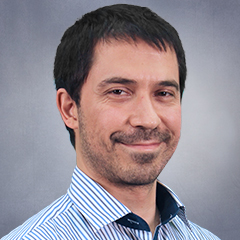Blog Articles
“Biology + Computers = Path to a great interdisciplinary career in biotech and pharma.”
- Arif Harmanci, M.S., Ph.D.
School of Biomedical Informatics bioinformatics track is the perfect venue to jumpstart a career in biotechnology, no matter what your background is. As a scientist who trained as an electrical engineer, I have firsthand experience in switching into the field of bioinformatics. SBMI is one of the best places to make this shift for yourself.
Let’s briefly look at what bioinformatics means. In general, biology seeks to understand how living things work and evolve. In the earlier days of biological research, methods were considered “low throughput.” Scientists tried to understand the cause of diseases using a limited amount of data. The analytical methods to analyze these data are well established by biostatistics. Recently, the data acquisition techniques have advanced exponentially and made it possible to generate billions of measurements from each individual, every day. Sifting through this data to make it useful for health is an enormous health data science problem. This is where bioinformatics comes in.
Bioinformatics uses computers to help explain complex biological phenomena. By itself, this makes perfect sense because a cell is an extremely complicated network of interactions between chemicals. The flow of biological data through these networks is what aids an organism as it lives its life. From that perspective, the distinction between health and disease is merely about the body’s ability to process information appropriately. Disruption of these information processing networks puts the body at risks of getting diseases such as cancer or autism. Although the manifestation of the diseases is very distinct and different from one another, the cause of any disease ultimately points to one or more malfunctioning network.
Bioinformatics combines multiple layers of information, for example, measurements of genetic, imaging, proteomics, microbiomics, etc. in very large quantities. It is a data-driven endeavor meant to understand and cure disease. Thanks to the plethora of data resources at SBMI, we can incorporate disparate data sources such as electronic health records as well. As we gather different data types, we will be able to look at our information processing networks in more detail to ultimately diagnose and treat diseases better.

Dr. Harmanci received his Master’s and PhD degrees in Electrical Engineering from University of Rochester, NY. He next received postdoctoral training at Yale University. His research is focused on building statistical and machine learning methods for analysis of high throughput genomic data such as whole genome and transcriptome sequencing